Archive for the ‘Threats from Weak Environmental Laws’ Category
Wednesday, January 11th, 2012
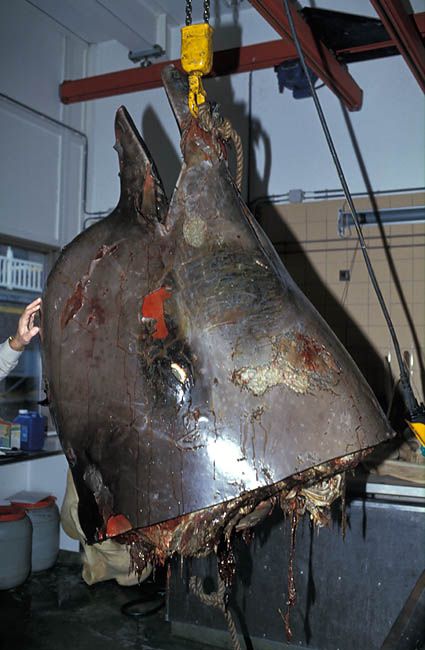 The Japanese kill bottlenose whales
(Photo: Save the Whales) The Japanese kill bottlenose whales
(Photo: Save the Whales)
.
If there is one redeeming legacy about previous British Tory Prime Minister Margaret Thatcher, despite the recurring criticism of her policies and leadership style by many Leftists, is that she was a political leader of strong convictions who commanded respect from foreign powers at a time when it was critical for Great Britain to stand by its principles.
Thatcher defended British sovereignty – its land, its people, its currency.
Not so Australia’s Labor-apparatchik installed puppet Prime Minister, Julia Gillard, who in pursuit of Rudd populism guided not by internal principle but by factions and focus groups is our chair warming PM of unprincipled mediocrity. Since her education revolution as Education Minister her costly results have been mediocre. Where are her principles? – ‘there will be no carbon tax under a government I lead‘, her extravagant $47 billion NBN without any cost-benefit study, her Malaysian solution for asylum seekers, her selling uranium to India against Labor principles and her appeasing foreign interests at Australia’s expense – US pharmaceutical and military interests, China’s mining and manufacturing interests, India’s nuclear interests and free trade with Indonesia, Malaysia and now Mexico and South American nations.
Clearly Ruddism drives Gillard foreign policy. All Gillard need do is fly in, deliver the speech and smile for the cameras, with Rudd up the back somewhere gesturing. Gillard abandoned Australia’s free speech defender Julian Assange and sided with the US Military. Japanese pirate whalers invade Australia’s Southern Ocean whale sanctuary to poach minke whales, endangered fin whales and threatened humpbacks. They now formal Japanese military support having brought their own guardian warship. Gillard doesn’t know what to do. She has a policy vacuum when it comes to the Environment, just like Labor siblings Garrett, Wong and Burke.
Rudd failed to honour his 2007 pledge to formally challenge Japanese whaling in the International Court of Justice. Only public outcry forced the Gillard Government to lodge its case with the court in May 2010. All Gillard does this time around with non-violent action group Forest Rescue boarding the Japanese whaling vessel Shonan Maru is to think legal and appeasing the pirate Japanese. Gillard has slammed the actions of three anti-whaling protesters as “unacceptable” and warned that others who carry out similar protests will be “charged and convicted”. However, the government should be preventing crimes in our near oceans, and illegal whaling, not condemning the actions of law-enforcers trying to do what they should be doing!
Gillard is gutless. Whaling is a sport. It is not scientific. It is not a primary industry because there is stuff all market for whale meat and the only way it is sold is because the Japanese Government subsidises the cost. Whaling is a cultural sport only and a backward cultural one at that. It is all about game.
The Japanese are traditionally a patriarchal society. Japanese males violating Australian waters for foreign whales for sport is consistent with Japanese male cultural history of violating foreign women they euphemistically called ‘comfort women’. Such Japanese culture is backward and foreign and has no place in Australian waters and the Australia Whale Sanctuaries that Australia is custodian for.
Japan‘s dogged pursuit of whales well beyond its shores in our Southern Ocean is more about preserving endangered cultural pride than science.
Japan‘s justifications for whaling are not commercial nor scientific, despite the official rhetoric. They are culturally deep and desperately self-preserving, despite being wrong, wasteful and backward. The scientific con is only to prevent flagrant breach of the Antarctic Treaty, to which Japan is a signatory.
Japan‘s arrogance is repeated with its refusal to respond with an apology to the request by acting Queensland Premier Lucas over Japan’s confirmed sinking of Australia’s hospital ship the Centaur in WWII. Australian’s should never forget that Japan is the only nation ever to directly threaten Australia’s sovereignty. Three generations later Japan again defies Australian sovereignty.
Gillards’ pre-election promise of getting tough on whaling (or was that Rudd’s?) was an election promise; that’s it.
.
One of the famous quotes from ‘Iron Lady’ Thatcher was “I seem to smell the stench of appeasement in the air.“
Gillard’s appeasement of Japanese whaling is the stench of her followship. Gillard is gutless. Gillard has no trait as a leader, let alone a principled leader of our nation.
Gillard has no regard for Australian sovereignty. Like her predecessor Rudd, who continues to advise on all things foreign to Australia, Gillard’s raison d’être is to comply as a puppet, enjoy her time in the sun until the next apparatchik push.
Like Rudd, Gillard treats Australian values as second rate, as if a foreigner with cultural disrespect.
Rudd reneged on his 2007 election promise to send an Australian ship to monitor Japan’s annual slaughter of 1000 minke, humpback and fin whales.
Rudd reneged on his pre-election undertaking to exercise Australia’s right to take Japan to the International Court of Justice over its whale hunting expeditions in the Southern Ocean.
Rudd’s turned his back on Japan’s harpoon whaling in Australian Antarctic waters and let Japan pirate whalers refuel in Australia.
Japan flagrantly ignores Australia’s whale sanctuary and Australia’s sovereignty. Japan condones an unprofitable, low demand and antiquainted 19th Century practice of whale harpooning, then tells international lies justifying some scientific spin that only discredits Japan’s reputation.
Japan’s Nippon Paper has been slaughtering Australian native forests for its immoral woodchip paper trade out of its habitat dead camp at its Twofold Bay mill at Eden.
How would the Japanese people like it if Gunns wanted to woodchip their sacred Aokigahara forest around the base of Mount Fuji?
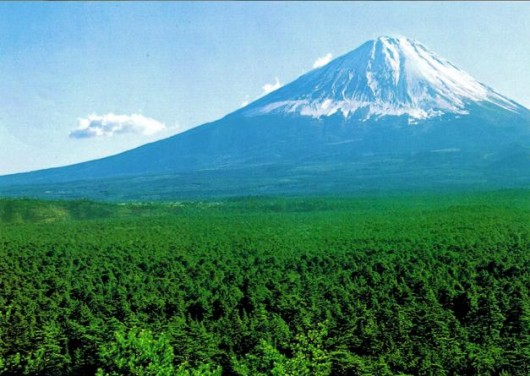 Aokigahara forest, below Mount Fuji Aokigahara forest, below Mount Fuji
.
Tags: Antarctic Treaty, Aokigahara Forest, Australia's sovereignty, Australian Government, Centaur, Gutless Gillard, International Court of Justice, Japan, Japanese whale poaching, Julia Gillard, Malaysian solution for asylum seekers, Margaret Thatcher, selling uranium to India, there will be no carbon tax under a government I lead
Posted in Antarctica (AU), Threats from Poaching and Poisoning, Threats from Weak Environmental Laws, Whales | No Comments »
Add this post to Del.icio.us - Digg
Monday, December 26th, 2011
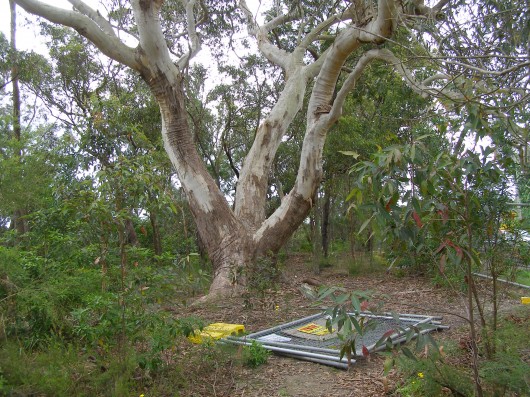 A native Scribbly Gum of Faulconbridge, Blue Mountains, Australia
…perhaps over 200 years old, healthy and in its natural setting.
(Photo by Editor 20111226, free in public domain, click photo to enlarge) A native Scribbly Gum of Faulconbridge, Blue Mountains, Australia
…perhaps over 200 years old, healthy and in its natural setting.
(Photo by Editor 20111226, free in public domain, click photo to enlarge)
.
.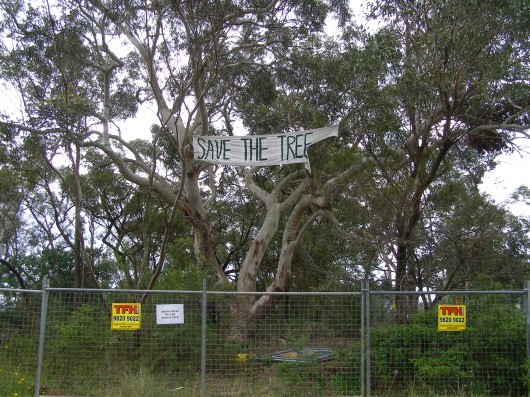 …but simply because land developers want to destroy the bush for selfish housing, they legally claim the tree is ‘potentially dangerous’
It seems the New South Wales Court Commissioner has sympathised and condemned the tree to a chainsaw death.
(Photo by Editor 20111226, free in public domain, click photo to enlarge) …but simply because land developers want to destroy the bush for selfish housing, they legally claim the tree is ‘potentially dangerous’
It seems the New South Wales Court Commissioner has sympathised and condemned the tree to a chainsaw death.
(Photo by Editor 20111226, free in public domain, click photo to enlarge)
.
Court Presumptuous?
.
The New South Wales Land (before) Environment Court has demonised and stigmatised this native Eucalypt tree as a “hybrid” (i.e. as a ‘half cast’ in human terms). The Acting Commissioner has ruled a death warrant upon this native old growth Eucalypt in its natural bushland setting on the following three bases:
..
Basis #1. Blue Mountains ‘Significant Tree’ protection ignores claims of a tree being somehow dangerous (however contrived, false and self-servingly malicious the rationale)
.
“While the provisions of (Blue Mountains Council’s) Development Control Plan (DCP) 9 must be considered as a fundamental element in the decision process…it does not necessarily follow that the tree should be retained under any circumstances.
“DCP 9 is silent on how to address trees that are potentially dangerous or unhealthy although Clause 6 provides the opportunity to “cut down”… any tree on the Register of Significant Trees” but with the consent of Council.”
(Ed: Blue Mountains Council had unanimously rejected the development application – so the ‘acting’ Commissioner is presuming any real opportunity and by raising such weak argument is siding with the developer).
.
Basis #2. The ‘acting’ Commissioner rejects the tree’s scenic quality instantly without due consideration and with a presumed fear of trees
.
“Accepting that the Hybrid adds to the scenic quality of the site and the surrounding area, this benefit needs to be balanced against the likely longevity of the tree and its health. (Ed: The Court has no grounds for estimating the longevity of this tree, and seems to be surmising on the basis of personal prejudice).
In this case, I have little trouble in concluding that the balance falls in favour of the removal of the tree . The conclusions of the two tomograph (xray) tests and the evidence of Dr McDonald and Mr James, and supported by the council officer, leave little doubt as to the appropriate outcome.
(Ed: Tomograph tests and evidence withheld in Court decision, so how do we know the tree is unhealthy?)
“I do not accept that the retention of the tree, irrespective of the scenic quality links to the area, should be preferred when there is a serious and legitimate question over the safety of the tree. (Ed: The “serious and legitimate question over the safety of the tree” is unsubstantiated and appears presumptive).
“In my view, the overwhelming expert and scientific evidence clearly suggests that the tree is dangerous and presents an unsafe situation for future ocupants of the site.”
(Ed: ‘Overwhelming‘ from what independent qualified and scientifically relevant source and where is the report? The ‘acting‘ Commissioner’s presumption of ‘future occupants of the site‘ suggests a high probability of judicial bias).
.
Basis #3. Tree canopies are inconsistent with housing safety
.
“Even if a dwelling is constructed outside of the area covered by the tree canopy, I am not satisfied that (it) sufficiently overcomes the potential danger from the tree. It would be clearly impractical to fence off the area under the canopy, given the limited area remaining for a dwelling on the site and the need to provide ancillary matters such as private open space and building setbacks.” (Ed: The Court is prejudging that the developer proposal for dwellings (x2) and proposed private open space and building setbacks have precedent values over the natural values of pre-existicng native bushland including a Council-protected significant mature native tree, native vegetation and bushrock).
“The suggestion by Ms Hobley that a dwelling could be located underneath the (tree) canopy is misconceived, given the weight of evidence for branch failure and which is supported by the obvious example where an existing branch has failed and only remains because it is held up by another tree on the site. I am not satisfied that Ms Hobley has given proper consideration to the potential for injury in her assessment of the tree.”
.
(Ed: The ‘acting’ Commissioner conveys an preconceived view that trees are dangerous. Details of “an existing branch” failing are not available in the Court’s decision.)
.
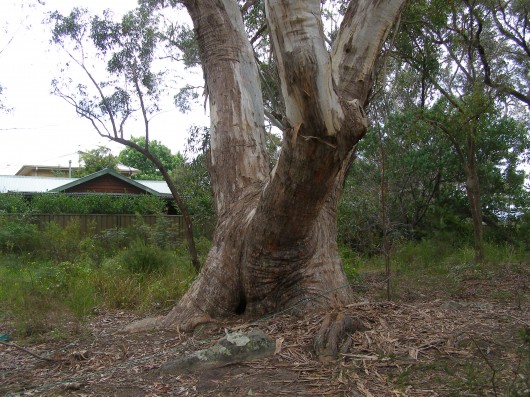 A native Eucalypt, condemned as a ‘hybrid’
by those who themselves are but hybrid descendants of colonists
because human invasion is enshrined in law as having a superior value than existing native old growth.
(Photo by Editor 20111226, free in public domain, click photo to enlarge) A native Eucalypt, condemned as a ‘hybrid’
by those who themselves are but hybrid descendants of colonists
because human invasion is enshrined in law as having a superior value than existing native old growth.
(Photo by Editor 20111226, free in public domain, click photo to enlarge)
.
The Habitat Advocate is pleased to support the efforts of local people in Faulconbridge trying to save this grand native tree from being killed. For further information visit: ^http://savethetree.org/
.
.
‘Native Cleansing’
.
Clearing native trees for human development is a value judgment of convenience. Philosophically native tree cleansing is no different to ethic cleansing of one human ethic group of another.
 Native forest deforestation (ethnic cleansing)
– at record levels across New South Wales Native forest deforestation (ethnic cleansing)
– at record levels across New South Wales
.
‘Ethnic Cleansing’ is a process in which advancing army of one ethnic group expels civilians of other ethnic groups from towns and villages it conquers in order to create ethnically pure enclaves for members of their ethnic group.
‘Serbian military commander in Bosnia, a war criminal sought by the War Crimes Tribunal in The Hague, Ratko Mladic, sometimes issued specific orders to his subordinates to shell a particular village more than others, because there is less Serbs and more Muslims living there. Often, refugees of one ethnic group previously “cleansed” from their homes by other ethnic group are made to live in freshly “cleansed” territory of that other ethnic group.’
.
[Source: ^http://balkansnet.org/ethnicl.html]
.
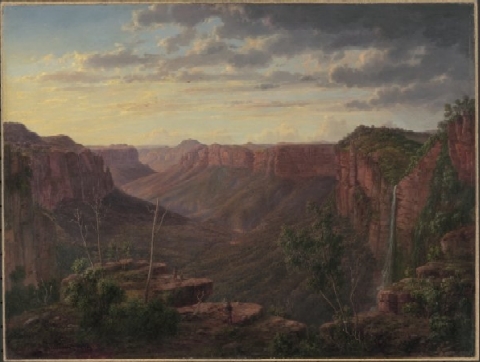 In 2011 humanity continues to trash the sublime for a selfish vista In 2011 humanity continues to trash the sublime for a selfish vista
.
http://www.youtube.com/watch?v=AbaIgHFcEaU&feature=player_detailpage
.
.
Further Reading:
.
[1] ^http://treeshaverightstoo.com/
‘It’s not just humans who have rights, all beings do. The right not to be polluted is a right that belongs to us as well as to the Earth, to the air we breathe and to future generations. There are other rights which apply to us all, the problem is that they are not yet recognised internationally. But this is rapidly changing and you can find more information about the campaigns and progress of this fast developing arena of humanitarian and environmental law, called Earth Law.’
.
[3] ‘Should Trees Have Standing? – Toward Legal Rights for Natural Objects’, by Christopher Stone, ^http://isites.harvard.edu/fs/docs/icb.topic498371.files/Stone.Trees_Standing.pdf [Read Article]
.
[2] ^http://therightsfuture.com/t16-do-trees-have-rights/
.
[3] ^http://northshorewoman.blogspot.com/2011/12/trees-have-rights-too.html
.
Tags: Blue Mountains, Blue Mountains Council, Development Control Plan, Earth Law, ethnic cleansing, Faulconbridge, Land and Environment Court, native cleansing, save the tree, Scribbly Gum, significant trees, species justice
Posted in Blue Mountains (AU), Ph04 Species Justice, Threats from Development, Threats from Weak Environmental Laws | No Comments »
Add this post to Del.icio.us - Digg
Thursday, December 15th, 2011
“The moment one definitely commits oneself, then providence moves too. All sorts of things occur to help one that would never otherwise occurred. A whole stream of events issues from the decision, raising in one’s favor all manner of unforeseen incidents and meetings and material assistance which no man could have dreamed would have come his way. Whatever you can do or dream you can, begin it. Boldness has genius, power and magic in it. Begin it now.”
~ attributed to Goethe.
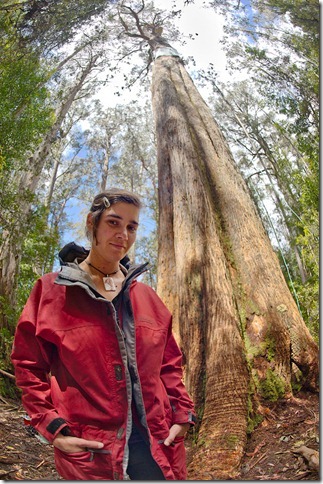 Miranda – Defender of Tasmania’s Forest Heritage
at the foot of ‘The Observer Tree‘
Mount Mueller Forest, Styx Valley, Tasmania
Miranda – Defender of Tasmania’s Forest Heritage
at the foot of ‘The Observer Tree‘
Mount Mueller Forest, Styx Valley, Tasmania
.
One young Tasmanian woman, charged with a deep commitment to her natural island heritage, continues to be prepared to do more to protect Tasmanian old growth forests than most Tasmanians. Miranda Gibson of Still Wild Still Threatened is certainly prepared to do more than the current (read ‘temporary‘) Premier of Tasmania Lara Giddings, and more than the current (read ‘temporary‘) Prime Minister of Australia, Julia Gillard, who have quickly turned their backs on Tasmanians to more populist party-political issues of the day.
.
 Tasmania’s Forest Wars
– what the Intergovernmental Agreement is supposed to resolve. Tasmania’s Forest Wars
– what the Intergovernmental Agreement is supposed to resolve.
.
Gillard and Giddings in breach of Tasmania’s 2011 Forest Agreement
.
Tasmanians are condemning government delinquency on meeting the conservation goals contained in the Gillard Labor Government’s Forests Intergovernmental Agreement (IGA) signed and promised to all Tasmanians in Launceston on 7th August 2011.
 Giddings and Gillard
– hollow Labor promises Giddings and Gillard
– hollow Labor promises
.
IGA Clause 25 states:
.
‘The State will immediately place the 430,000 ha of native forest identified in Attachment A (other than any areas which are not State forest) from the 572,000 ha nominated by ENGOs through the Statement of Principles process, into Informal Reserves.’
.
IGA Clause 27 states:
.
‘In the event that Forestry Tasmania reports that it cannot meet contractual requirements from production resources outside the nominated 430,000 ha the Governments will undertake the following steps. First, an independent expert will be jointly appointed by the Governments to review scheduling and other relevant data and attempt to reschedule harvesting activities so as to meet the requirements of contracts and maintain the interim protection of 430,000 ha. In the event that the independent expert concludes it is impossible to achieve this, the Commonwealth will compensate the contract holder for the value of lost profits and unavoidable costs.’
.
Gillard’s fly-in to Launceston on 7th August 2011 to sign and celebrate the Tasmanian Forests Intergovernmental Agreement with Labor mate Giddings was not a mere plaque unveiling, it was a Tasmanian landmark agreement to provide certainty for Tasmania’s forestry industry, support local jobs and communities, and protect the state’s ancient forests. It deserves the respect of commitment and follow through on promise.
On the one hand it has funded Forestry and its associated families hundreds of millions and with a dignified exit from logging and transition to alternate trades. On the other hand Gillard’s Forest Agreement guarantees protection for Tasmania’s natural but threatened heritage – its most iconic ancient forests, immediately placing 430,000 hectares of iconic old growth native forest into informal reserve – the Styx, Upper Florentine, Huon, Picton and Weld Valleys and the Great Western Tiers, Tarkine and Wielangta.
.
Gillard’s promise made to the Australian people (Prime Minister Gillard’s official website):
.
‘These forests will not be accessed for harvest while verification takes place.‘.
Well, verification is still taking place. And Bill Kelty, who brokered the deal, seems to have run to the hills.
Such a landmark State-wide agreement that promises a ‘strong foundation‘ is hollow if the leadership waddles off to be distracted by other issue so the day, without the committed delegation of trusted lieutenants to see through on implementation. Predecessor PM Kevin Rudd failed classically on the implementation phase of his policy – insulation being his and Garrett’s multi-million dollar incompetent legacy.
“The Australian and Tasmanian governments are taking too long to implement the intergovernmental agreement. If they can get their act together to offer contractors exit packages then they can honour the conservation agreement as well.” Greens Senator Bob Brown has said. “Four months later not one hectare has been protected and Forestry Tasmania continues to fell these magnificent trees as fast as they can put the roads in. All up, more than 10km2 of our wild forests will be destroyed“, Greens Senator Brown said.
All political leaders, while dancing on mountains of power and influence, pragmatically realise that their time in office is temporary. Status quo is not a characteristic of modern democratic politics. What matters most in political careers is legacy. Australia’s current Prime Minister Julia Gillard is starting to stare that legacy in the face as she allows Premier Lara Giddings to breaking the $276 million promise by backing Forestry Tasmania’s current logging of the 430,000 hectares of old growth forest protected under the Gillard Government’s Agreement.
.
Tasmanian Betrayal
.
Gillard and Giddings have allowed Forestry Tasmania to log the protected 430,000 hectares, ignoring the prescribed compensation requirement. Gillard and Giddings have blatantly reneged on their core promise in the Agreement to cease logging and to protect these forests. Gillard and Giddings have betrayed the Tasmanian and Australian people. They have no mandate to stay in power. Their broken promises are to be their legacies.
.
“Those who cannot work with their hearts achieve but a hollow, half-hearted success that breeds bitterness all around”
~ Abdul Kalam, President of India (b.1931)
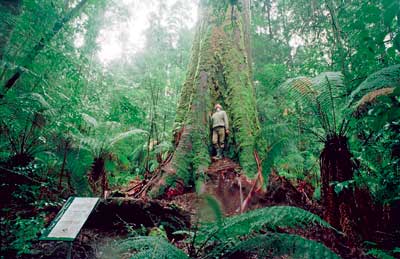 Styx Valley Giants being massacred by State logger ‘Forestry Tasmania’ Styx Valley Giants being massacred by State logger ‘Forestry Tasmania’
.
Tasmania sells itself as ‘the natural state’. But there is a gap between rhetoric and reality as logging of old-growth forests continues – to international dismay.
“And they have these big logs, and you just know they are coming from old-growth forests…I don’t think I could take living there and seeing them every day knowing (the trees) are going mostly to woodchips.” ~ Larraine Herrick or Tumbarumba, Snowy Mountains, New South Wales.
But the Styx has been, and (is continuing) to be, logged by the timber industry in a state in which questions have been repeatedly raised about whether cronyism, corruption and deception underlie the management of forests. Only discovered in 2002, El Grande was a Eucalyptus regnans with a 19-metre circumference. Last autumn (2003), it was killed when a regeneration burn went wrong. Its demise helped fuel a midwinter protest that drew more than 2000 people to the Styx Valley. There, The Wilderness Society and Greenpeace began a tree-sit, 65 metres up a threatened giant eucalypt called Gandalf Staff.
.
[Source: ‘Tasmania: seeing the wood but not the trees‘, by Melissa Fyfe and Andrew Darby, The Age Newspaper, 20040313, ^http://www.theage.com.au/news/science/tasmania-seeing-the-wood-but-not-the-trees/2004/03/13/1078594604573.html]
.
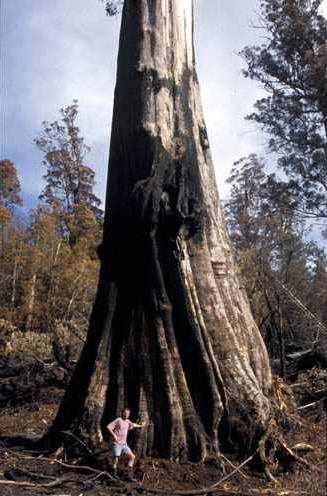 ‘El Grande’
Australia’s largest tree burned to death in 2003 by Forestry Tasmania’s incompetence ‘El Grande’
Australia’s largest tree burned to death in 2003 by Forestry Tasmania’s incompetence
.
Tasmanian forests activist organisation Still Wild Still Threatened have called on the Federal and State governments to honour a $276 million forest deal made on 7th August 2011.
“This deal has already seen $35 million delivered to Forestry Tasmania and Gunns Ltd. without protecting a single tree” said Still Wild Still Threatened spokesperson Ali Alishah.
“It is clear that by backing Forestry Tasmania’s destructive practices within the identified 430,000 ha area of high conservation value native forest, the State and Federal Governments are in direct violation of Clauses 25 and 27 of their own Inter Governmental Agreement.” said Mr. Alishah.
.
.
.
The Observer Tree
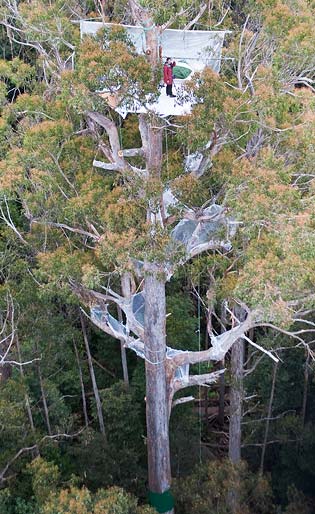
Miranda Gibson on top of The Observer Tree
Totally committed to Tasmanian Forests,
unlike Gillard and Giddings hollow words.
.
Still Wild Still Threatened have this week launched a new tool in the fight to protect Tasmania’s forests today, unveiling the ‘ObserverTree‘, a 17-storey high tree sit and media centre equipped with the technology to record footage of logging operations and stream these images live to the world via the internet.
The Observer Tree is located in the Styx Forest below Mt Mueller, in Tasmania’s western wilderness, part of the 430,000 ha of forest that was supposed to receive immediate protection under the federal-state agreement on forests (the IGA). The Observer Tree is situated at the head of a section of Styx Forest currently targeted for logging by Forestry Tasmania.
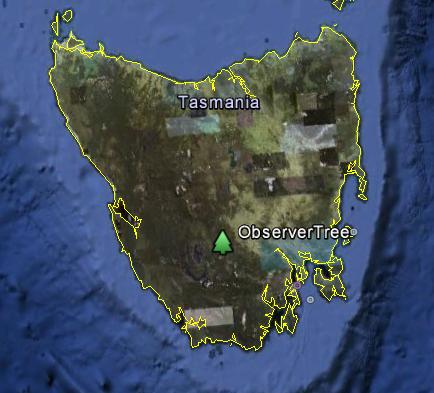 ‘Observer Tree’ location
^http://observertree.org/2011/12/15/observertree-on-google-maps/
‘Observer Tree’ location
^http://observertree.org/2011/12/15/observertree-on-google-maps/
.
Teacher, author and forest activist, Miranda Gibson, has vowed to occupy the tree-platform continuously, until real protection is secured for Tasmania’s forests. Ms Gibson will maintain a daily blog and upload video updates during her stay in the tree, documenting the struggle to protect Tasmania’s forests to concerned people all over the globe.
‘We have used the internet to connect this spectacular patch of threatened Tasmanian forest to the world. The Observer Tree will transmit images and information about the value of the thousands of hectares of forest that remain threatened if Julia Gillard does not keep her word. People across Australia and the globe will have the opportunity to view bear witness to the wasteful destruction of these forests and hear from the people fighting to protect them,’ said Ms Gibson.
For the first time their actual logging will be broadcast live internationally via the web.
Website: ^http://www.observertree.org
Facebook: ^http://www.facebook.com/#!/pages/ObserverTree/152795598158969
Download Google Earth (93MB): GoTo: ^http://www.google.com/earth/download/ge/
.
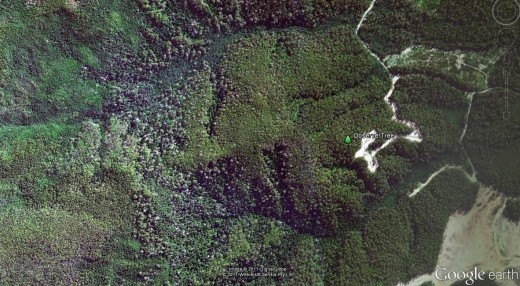 Google Earth’s satellite image of the Observer Tree in dense old-growth, adjacent to Forestry Tasmania’s fresh logging road
(click photo to enlarge) Google Earth’s satellite image of the Observer Tree in dense old-growth, adjacent to Forestry Tasmania’s fresh logging road
(click photo to enlarge)
.
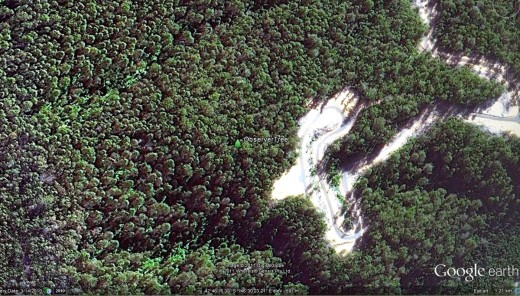 Close up image
(click photo to enlarge) Close up image
(click photo to enlarge)
.
.
Monday: Forestry Tasmania attacks the Styx Forest
.
On Monday 12th December 2011, State forest ‘nazi logger’, Forestry Tasmania, under the command of District Officer (Gauführer) Steve Whitely, rolled in its contracted ‘ecodeath-squad’ into the western end of the magnificent Styx Valley. The targeted forest area is situated at the base of Tasmania’s prominent and wild Mt Mueller on the border of the World Heritage Area. It is situated about 25 km west of the infamous logging town of Maydena.
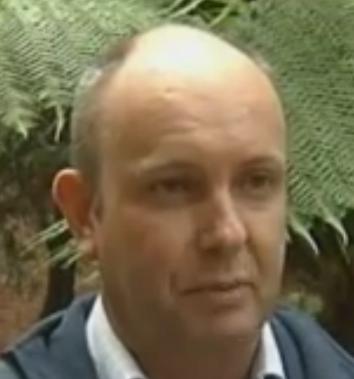 Directing the logging – Forestry Tasmania’s Steve Whiteley
[Source: Southern Cross Television, 20111214]
Directing the logging – Forestry Tasmania’s Steve Whiteley
[Source: Southern Cross Television, 20111214]
.
In true forest nazi style, Forestry Tasmania’s targeted forest area is branded as coupe ‘TN 044B‘.
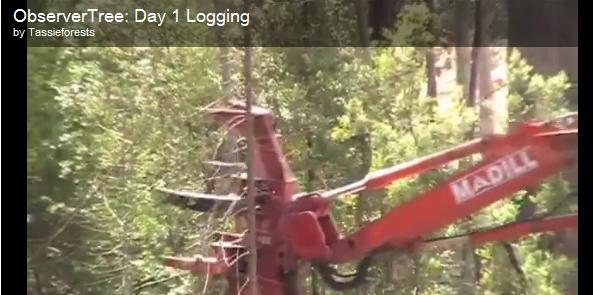 Logging Nazi in and destroying the Styx Valley Forest
Monday 12th December 2011, in direct breach of Prime Minister Gillard’s Forest Agreement. Logging Nazi in and destroying the Styx Valley Forest
Monday 12th December 2011, in direct breach of Prime Minister Gillard’s Forest Agreement.
.
This ‘Madill’ feller buncher was getting well stuck into the Styx Valley last Monday morning just below the Observer Tree. The hydraulic arm clamps onto the trunk of the tree while a cutting mechanism severs the tree at the stump. The machine then lifts the tree, lowers the tree into a horizontal position, and drops the tree on a bunch of logs piled on the ground. The industrial machinery has all the efficiency of a Nazi death factory.
.
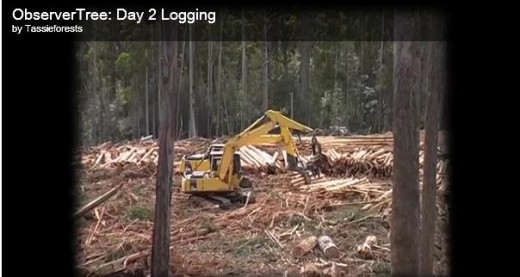
.
Foresty Tasmania is operating in direct contradiction of IGA Clauses 25 and 27. The coupes within the 430,000 ha of high conservation value forest are not to be logged under any condition. The IGA prescribes that relevant customers and contractors are to be granted compensation and million have been set aside for this purpose. Foresty Tasmania under Gauführer Steve Whitely is out of control. He is driving ecological apocalypse in Tasmania’s southern forests. He has become a Walter E. Kurtz.
 Walter E. Kurtz – unhinged, his methods unsound. Walter E. Kurtz – unhinged, his methods unsound.
.
Tags: Abdul Kalam, activist, Bill Kelty, El Grande, Forestry Tasmania, Gandalf, Google Earth, Inter Governmental Agreement, Julia Gillard, Lara Giddings, Maydena, Mount Mueller, nazi logger, Observer Tree, old growth forest, Still Wild Still Threatened, Styx Forest, Styx Valley, Tasmania, Tasmanian Betrayal, Tasmanian Forests Intergovernmental Agreement, The Observer Tree, Woodchipping Tasmania
Posted in Tasmania (AU), Threats from Deforestation, Threats from Weak Environmental Laws, Threats to Wild Tasmania | No Comments »
Add this post to Del.icio.us - Digg
Monday, December 12th, 2011
“I wish to explore what remains for most – and has been for me – a terra incognita, a forbidden place, a heart of darkness that civilised people have long attempted to repress – that is, the wilderness within the human soul and without, in that living profusion that envelops all creation.”
.
~ Max Oelschlaeger, The Idea of Wilderness: From Prehistory to the Age of Ecology (1993)
.
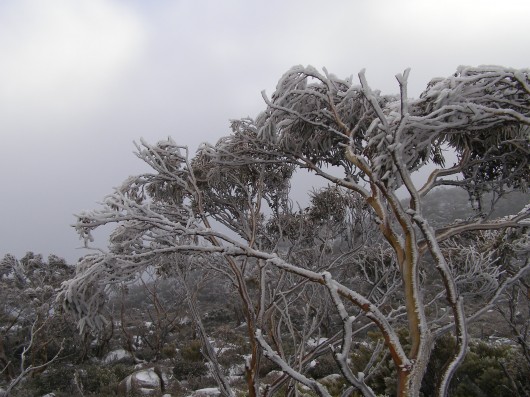 Pinnacle of Mount Wellington, Tasmania
(Photo by Editor 20111001, free in public domain, click photo to enlarge) Pinnacle of Mount Wellington, Tasmania
(Photo by Editor 20111001, free in public domain, click photo to enlarge)
.
In 2007, former United States Vice President Al Gore‘s campaign to educate citizens about global warming was portrayed in an award winning documentary film ‘An Inconvenient Truth‘.
The subject matter, global warming, has indeed become an inconvenient truth because the global scale of the problem is such that the powers that be have so far been finding it difficult to comprehend. They have been told that it demands a response so systemic as to be transformational, which is highly inconvenient for them to say the least. The transformational response is mostly inconvenient to the powerful vested interests in polluting industries that are key contributors to global warming – particularly oil, gas, coal, heavy manufacturing, transport and weapons industries.
.
‘Deluded Convenience’
.
On the flip side of this inconvenience of the truth, powerful vested interests understandably, are hell bent on maintaining their convenient business as usual practices, choosing to ignore, reject and deny the truth. It is their short term interests to do so, because change is expensive and threatens to diminish their power, influence and wealth. But in the long term, by perpetuating practices that are shown to be damaging to the Earth’s climate, the imperative of maintaining a convenient business as usual approach is a deluded one, as everyone will be adversely affected by global warming. They are only deluding themselves. Such harmful business-as-usual practice is a ‘deluded convenience‘.
Harmful business-as-usual practices that are contributing to global warming were once branded aspiringly in the 18th, 19th and 20th Centuries as ‘industrial progress‘. The widespread Western culture from Western Europe and the United States has for over three hundred years idolised the ‘civilised’ advances of the Industrial Revolution, capitalism and economics. Western economies now have many conveniences of lifestyle, but attaining them has caused considerable cost to societies and ecology. Globalisation has destroyed family-based enterprises, local markets and village communities and caused wars and immense suffering. Industrialisation has destroyed many forests, rivers, valleys, coastlines and species. These have been the cost of convenience, the cost of civilisation; and we are now paying the price.
.
“It is fairly widely accepted today that environmental destruction ultimately becomes self-destructive as a sick and impoverished global environment in turn sickens and impoverishes the human members of that ecosystem.
..Why, despite warning signs from a stressed global ecosystem, mounting scientific evidence, and public education campaigns, does degradation of the environment continue to persist and mount?”
.
~ Catherine M. Roach, 2003, ‘Mother Nature: Popular Culture and Environmental Ethics.
.
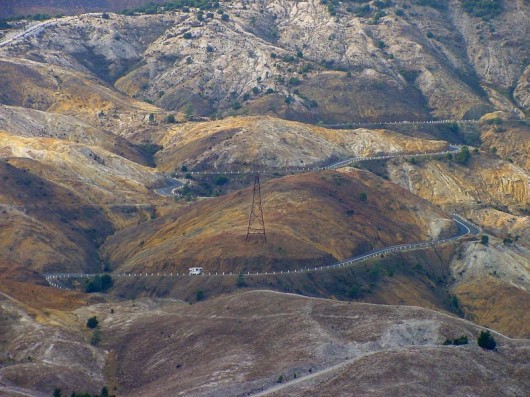 Absolute environmental destruction above Queenstown, Tasmania Absolute environmental destruction above Queenstown, Tasmania
.
Bushphobia – a form of deluded convenience
.
Bushphobia is a composite term emanating from Australia, which combines two words ‘bush’ meaning the native forest and scrub environment of Australia’s unique animals and plants, with the non-clinical use of the term ‘phobia’. Phobia (from Greek φόβος, phóbos: fear, phobia) is an anxiety association, a negative attitudes towards, a dislike, disapproval, prejudice, discrimination, or hostility of, aversion to, or discrimination against something. Bushphobia is borne out of learnt acculturation adopting two distinct attitudes:
- A deep fear of the bush due to its propensity to burn and cause horrific wildfires
- A dislike of Australian native vegetation due to its wild untamed appearance which is so different to exotic trees and landscapes that have a more symmetrical and accessible character
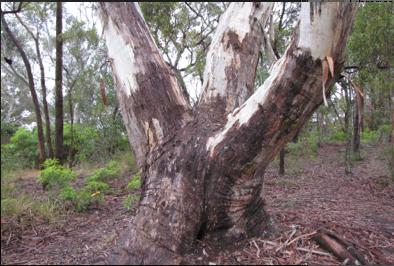 An Australian native tree discriminated against by a pro-development Court ruling…because it may be dangerous
^http://www.savethetree.org/
An Australian native tree discriminated against by a pro-development Court ruling…because it may be dangerous
^http://www.savethetree.org/
In this case a discrimination against the bush, where the word ‘bush’ is an Australian term for native forest and scrubland. Bushphobia was first used with its modern meaning in 2008 in the Blue Mountains in eastern Australia which represents an intolerance and prejudice against the natural Australian bush vegetation mainly because of its susceptibility to burning in the case of bushfires and the consequential fire threat to life and private property.
The combined meaning is to have a persistent irrational fear specific fear or loathing of the natural (bush) environment. There are three classes of phobias: agoraphobia, social phobia, and specific phobia (Wood 521). Bushphobia is a specific phobia associated with a fear of natural environment.
Bushphobia is a socially learnt fear and loathing toward the bush common amongst rural volunteer bushfire fighting organisations which is instilled in new recruits as part of the training tans assimilation process. Bushphobia has thus become a form of learned cultural prejudice amongst the rural fire fighting fraternity throughout Australia. This attitude becomes deep seated and a motive to regard native forests, not as valued natural assets and habitat for native flora and fauna, but only as a combustible fuel that is prone to burn and thus a menace and ‘hazard’. The standard myth conveyed about the bush that inculcates bushphobia is that if the bush is not destroyed and allowed to grow naturally then the bush will develop into an uncontrollable fuel that in the event of a bushfire will cause an horrific fire storm and Armageddon. The issue of inadequate bushfire fighting capabilities is conveniently ignored.
Those who only see the bush through a bushphobic mindset desire to burn it, bulldoze it and destroy it at any opportunity when weather permits such action to be done safely. Deliberate burning of the bush has become a ‘prescribed burning’ policy of Australian governments at both state and federal level attracting massive resources. In New South Wales prescribed burning is labelled ‘hazard reduction’. History however has shown repeatedly that many prescribed burning activities frequently escape control lines an end up destroying vast areas of bush.
.
.
NIMBYism – a celebration of ‘think globally, act locally’
.
The maxim ‘Think globally, act locally‘ has long passed into the vernacular, urging grassroots activism where thinking about the health of the entire planet is translated into taking action at a local level in one’s own community. The phrase has been originally attributed to Scottish town planner and social activist Sir Patrick Geddes FRSE [1854-1932].
 Sir Patrick Geddes (c.1886) Sir Patrick Geddes (c.1886)
.
At a time in the early 20th Century when industrialisation was dramatically altering the conditions of social life, Geddes recognised the role of architectural amenity on urban life, particularly promoting the happiness, health and comfort of all residents, rather than focusing on roads and parks available only to the rich. He applied this in his design of Edinburgh, Tel Aviv and Bombay. Geddes was an advocate of nature conservation and strongly opposed to industrial pollution. Some historians have claimed he was a forerunner of modern Green politics. At a time of rapid urban growth, Geddes coined the term ‘conurbation’ observing how population growth was pushing large towns to merge into one continuous urban and industrially developed area. In Geddes’ 1915 book “Cities in Evolution” his advocacy of maintaining local character in urban planning is clearly evident:
‘Local character’ is thus no mere accidental old-world quaintness, as its mimics think and say. It is attained only in course of adequate grasp and treatment of the whole environment, and in active sympathy with the essential and characteristic life of the place concerned.’
.
Prominent American environmentalist and mountaineer David Brower [1912 – 2000] and founder of Friends of the Earth (FOE) in 1969 is believed to have been the first to applied the phrase ‘think globally, act locally‘ in an environmental context as the slogan for FOE. Application of ‘think globally, act locally‘ maxim in this environmental context has manifest itself most prevalently when grassroots activism erupts as a result of inappropriate land use development threats. Local residents opposing inappropriate development are following the thinking of Geddes by recognising the important value of local amenity to the health and happiness of local residents. Developers are quick to deride the rights of local residents to defend their neighbourhood amenity, labelling them as NIMBY‘s – an acronym for the phrase “Not In My Back Yard“, first coined in 1980 by British writer Emilie Travel Livezey in an article ‘Hazardous Waste‘.
Nimbyism is used typically by proponents of a development to pejoratively describe opposition by neighbouring residents. Nimbyism, however is simply acting locally to protect the values of one’s neighbourhood. Standing by and watching an inappropriate development proceed is an option, but why stand by? Residents who plan to live in a locality for some time and perhaps for the rest of their lives, have a democratic right and a say in what happens to their locality and this includes a say its preserving or changing the locality’s amenity and character. It is about holding strong principles of community governance and valuing the rights of locals to participate in decisions that directly affect them. Local residents are the stakeholders who will have to live permanently with a development and so are most deserving in having a louder voice in development decisions to balance corporate developers and their investors.
Amusing variants of NIMBY are:
- ‘NIMFYE’ = Not In My Front Yard Either
- ‘NIMTOO’ = Not In My Term Of Office [a favourite of politicians]
- ‘NITL’ = Not In This Lifetime
- ‘NOPE’ = Not On Planet Earth
- ‘NOTE’ = Not Over There Either
- ‘GOOMBY’ = Get Out Of My Backyard [Common in new suburbs that encroach on industrial sites or airports]
- ‘NIABY’ = Not in Anyone’s Backyard
- ‘NUMBY’ = Not Under My Backyard (applicable to mining companies)
.
And this Editor’s favourite:
- ‘BANANA’ = Build Absolutely Nothing Anywhere Near Anything
.
.
‘A recent report has found that nearly 80% of U.S. residents oppose any new development in their community. It’s the highest level of opposition recorded in the report’s six-year history, and the first time since 2008 that the amount of opposition has increased.’
.
[Source: ‘As America Ages, NIMBYism Could Increase, by Nate Berg, The Atlantic Cities, 20111017, ^http://www.theatlanticcities.com/politics/2011/10/as-america-ages-nimbyism-could-increase/306/]
Given that Nimyism is a developer term used derogatorily against residents who dare to question and challenge land use development , the counter-language on the side of residents is ‘property rights‘ and ‘planning democracy‘. Many residents out of frustration with the local planning process decide to form an action group. One organisation well experienced in this quest is Sydney-based Save Our Suburbs.
.
Save Our Suburbs
.
‘Save Our Suburbs (NSW) Inc is a non-profit & non-aligned group of residents, originally formed to fight against forced rezoning and over-development of Sydney’s suburbs. It has grown to include communities who are fighting for better planning and regulation on a range of development issues, including major infrastructure projects such as road tunnels. Sydney’s beleaguered residents have been fighting an endless string of localised battles against increased density developments (‘urban consolidation‘) and badly planned developments such as unfiltered tunnel exhaust stacks. We have been fighting local councils about local rezoning and local developments, and state government departments about the lack of regulation and planning. Residents are usually the losers in these local battles. If we want to effectively protect the environment and heritage of our suburbs, we need to take the fight beyond our local areas into the State Government arena. This can only be achieved by organised and united residents. Save Our Suburbs (NSW) Inc has been formed for this very purpose.
.
Fundamental Objectives:
- Return Planning democracy to New South Wales, by allowing true consultation, and giving planning power back to local councils: The people should decide, not a Planning Dictator!
- End big developer donations to political parties: We want planning decisions based on merit, not on money!
- Save our property rights: Provide just compensation for loss of land, income or amenity, and for change of land use.
- End forced urban consolidation- allow sensible land release, with infrastructure funded by the government: Dump the failed planning policies, designed to favour big developers rather than the community.
Read More: ^http://www.sos.org.au/
.
.
Bushphobia – a ‘case’ of deluded convenience
.
‘Our urban footprint is encroaching further and further into bushland. The amount of land used as space for community living is decreasing as urban settlements have sprawled. This is affecting the opportunities we now have to meet and interact as communities. The consequences of urban sprawl include a decline in the supply of affordable housing, increased bushfire risk for individuals and property and increasing impacts on the environment.’
Historically, much of the development in the Blue Mountains has encroached well into bushland with little regard for environmental impact and often without supporting infrastructure, such as sewerage and transport systems. This dispersed, sprawling development pattern along ridgelines has been added to by post war residential development, creating many of the ‘suburbs’, particularly in the lower Blue Mountains. As all available sites for new development dry up it is likely that existing urban areas will come under increasing pressure for redevelopment.’
[Source: Blue Mountains Council, ^http://www.sustainablebluemountains.net.au/imagesDB/resources/Paper14bOurFuture.pdf, p.4]
 An example of current housing encroachment into bushland
Faulconbridge, Blue Mountains, New South Wales, Australia
An example of current housing encroachment into bushland
Faulconbridge, Blue Mountains, New South Wales, Australia
[Source: Century 21 Real Estate, ^http://www.realestateview.com.au/Real-Estate/faulconbridge/Property-Details-buy-residential-2842241.html
.
A case in point involves the current issue about a significant native tree facing death due to the threat of housing development in the Blue Mountains village of Faulconbridge.
About midway along the conurbated highway corridor through the Central Blue Mountains lies the urban village of Faulconbridge. Like all the other villages and towns along this highway, Faulconbridge residential housing ultimately backs on to the Blue Mountains National Park, which forms part of the Greater Blue Mountains World Heritage Area.
 Faulconbridge juxtapositioned to the Blue Mountains World Heritage Area.
[Source: Google Maps]
Faulconbridge juxtapositioned to the Blue Mountains World Heritage Area.
[Source: Google Maps]
.
A local resident action group in St Georges Crescent, Faulconbridge has been recently formed to try to save a significant native tree situated in its natural bush environment from being killed for housing development. The resident group, lead by local Faulconbridge resident Don Cameron, is simply called ‘Save the Tree‘ and a dedicated website has been designed and set up: ^http://savethetree.org
 A mature native tree in a forest but on death row
so that property developers can build a house or two.
(St Georges Terrace, Faulconbridge, Blue Mountains, New South Wales Australia,
Source: ^http://savethetree.org)
.
A mature native tree in a forest but on death row
so that property developers can build a house or two.
(St Georges Terrace, Faulconbridge, Blue Mountains, New South Wales Australia,
Source: ^http://savethetree.org)
.
According the website, the subject tree has been listed on Blue Mountains Council’s Register of Significant Trees since August 1985 – #33. The subject land site where the tree stands comprises remnant bushland including the significant tree as well as three locally rare Faulconbridge Mallee Ash trees (Eucalyptus burgessiana), which is a rare species of flora included on the Australian botanical list of Rare or Threatened Plants (ROTAP).
In early 2010, a development application for two dwellings on the site was submitted to council. The proposal included the removal of a considerable amount of the remaining vegetation including the removal of the significant tree. In that same year, numerous residents submitted objections to the development application. As a result of Council’s notification process, fifteen submissions from local residents were received objecting to the development on the following bases:
- Removal of the significant tree from the site
- Clearing and loss of vegetation, including threatened
- Species of vegetation, and screening of the development
- Impacts on streetscape
- The lot should become public land
- Overdevelopment of the site and the bulk and scale of the development
- The proposed development is out of character with the surrounding development
- Proposed subdivision into 2 lots
- Loss of environmental features of the site
- Increased stormwater impacts and local flooding
- Pedestrian and traffic safety
- Reduced building setbacks
.
[Source: Blue Mountains Council, Ordinary Meeting of 28th June 2011, Section: ‘Using Land for Living’, Item 20, Ordinary Meeting, 28.06.11, p.212, 20. 11/85977. Development Application no. X/443/2010 for a detached dual occupancy consisting of a single storey dwelling and a two storey dwelling…Faulconbridge]
.
Council Planning assessed the Environmental Impacts of the proposed development as follows:
‘There are currently three (3) Faulconbridge Mallee Ash (Eucalyptus burgessiana) located on the subject allotment. This is a rare species of flora which is on the list of Rare or Threatened Plants (ROTAP) published by the CSIRO. While it is acknowledged that Eucalyptus burgessiana are a rare plant, they are not listed as a threatened species under either the Threatened Species Conservation Act or the Environmental Protection and Biodiversity Conservation Act.
‘There are also a number of other indigenous trees on the property including a large Eucalyptus Sclerophylla x Eucalyptus Piperita hybrid which is listed as a significant tree in DCP 9 Significant Trees. The proposed development will result in the removal of much of the vegetation on the site including two (2) of the Eucalyptus Burgessianna and the significant tree. The site also contains a number of significant rock outcrops which are identified by the LEP as a significant natural feature.’
.
The proposed development has been sited to avoid as far as practical impacts on those outcrops. In particular, it is noted that the development has been designed to ensure that both the dwellings and the vehicular driveways are predominantly clear of the two most significant features, being the outcrop adjacent the frontage with St Georges Crescent and the outcrop toward the centre of the lot.
Clause 44(4) provides a hierarchy for considering any adverse environmental impact which may result from any development. This clause requires that any development should be designed and sited so as to have no adverse environmental impact. However the clause goes on to provide that where an adverse environmental impact cannot be avoided and no practicable alternative is available, it is necessary to consider the proposed use of the land with reference to the zone objectives of the land. In this respect, while it would be possible to reduce the impacts if the development was confined to a single dwelling only, it is considered that there are no practicable alternatives that would allow all the rare species and the significant tree to be retained and at the same time, allow the permitted use as a detached dual occupancy.
.
It should also be noted that the significant tree has been assessed as not being viable for retention in any case as the result of extensive decay throughout the trunk. This matter is discussed in more detail in the body of the report.’
.
Biodiversity incremental degradation encouraged by Council Planners
.
The matters for consideration are:
‘ The need to prevent adverse impacts on the near pristine conditions of these subcatchments’
.
Council Planning Response:
‘The proposed development is located on an existing vacant lot within the urban area. There will be a significant amount of vegetation removal but this is unavoidable to provide for development of this site. The site will be revegetated and landscaped.’
(Editor: ‘revegetated’ permits destruction of native bushland in favour of creating an exotic urban garden complete with fertiliser and associated runoff).
Both dwellings will be connected to the sewer.
It is considered that the proposed development will not have any adverse impact on the condition of the Grose River Sub-catchment.
(Editor: What is ignored is the collective impact of multiple development applications on Blue Mountains biodiversity and catchments. The planning guidelines fails to factor the collective death by a thousand cuts).
The proposed development is located clear of the areas of surface rock on the property and has been designed to minimise cut and fill by the use of drop edge beams. While the development will result in the removal of two (2) of the Rare or Threatened Plants listed trees, the site is not part of a contiguous area of bushland and it not considered that their removal will have a significant impact on the species.’
– – –
On 28th June 2011, following Blue Mountains Council’s planning assessment, councillors voted unanimously at a General Meeting to refuse the development application on the basis that it breached Council’s local planning laws. The meeting was addressed by: Don Cameron, Robert Leslie, Rama Decent, Terry Barrett.
A motion was moved by Councillors Searle and McLaren that the Development Application No. X/443/2010 be refused on the following grounds:
- The proposed development is contrary to the objectives for the ‘Living-General’ zone under LEP 2005 in that it does not maintain and improve the character of the area, or respond to the environmental characteristics of the site;
- The proposed development, including the removal of the significant majority of existing trees and other vegetation from the site, will have an unacceptable adverse impact on the established landscape character of the locality;
- The proposed development will have an unacceptable adverse environmental impact and is contrary to the provisions of Clause 44 of LEP 2005 in that it has not been designed and sited to minimise impacts on the rare species of plant Eucalyptus Burgessiana and the destruction of rock outcrops on the property;
- The proposed two storey component of the development will be visually prominent and have an unacceptable impact on the existing streetscape when viewed from St Georges Crescent;
- The proposed development is an over development of the site in terms of the height, bulk and scale of the two storey dwelling fronting St Georges Crescent;
- The proposed development does not comply with Clause 2, Part 1, Schedule 2 – Locality Management within the Living Zones, of LEP 2005 by reason that the rear dwelling encroaches onto the 4 metre secondary street frontage setback to Adeline street, and the Council is not satisfied that the objection lodged pursuant to State Environmental Planning Policy No 1 is well founded or that compliance with the standard is unreasonable or unnecessary in the circumstances;
- The proposed stormwater management measures proposed are not adequate, given the potential run-off from the proposed development of the land as a dual occupancy; and Confirmed Minutes Ordinary Meeting 28 June 2011, p.21 of 28
- The grant of development consent will be contrary to the public interest.
.
Upon being put to the Council meeting, the motion was carried unanimously.
Not content with this unanimous decision, the owners of the site appealed against the Council democratic umpire, and in September 2011 the appeal case was heard by The Land & Environment Court of New South Wales.
Specialist arborists gave conflicting reports on the health and viability of the said tree, perhaps according to their respective client motivations. Yet the arborists of opposing parties were engaged as expert witnesses of the Court and so legally presumed to be independent. But legal presumption conveniently ignores contractual undertaking, so the evidence was likely biased to the respective parties.
In the interim findings, the Acting Senior Commissioner agreed that the tree could be removed, notwithstanding its status as a Significant Tree. (Editor: for whose convenience?)
A final ruling on the case will be made after the applicants have submitted a complying landscape plan. One won’t be surprised if the ultimate outcome is from dense mature intact bush to a clearfelled, bulldozed site, and the Court will somehow justify this in favour of the property owners as it normally does.
More information and analysis on this case will be presented in future.
.
.
Further Reading:
.
[1] ‘ The Idea of Wilderness: From Prehistory to the Age of Ecology’, by Max Oelschlaeger, ^ http://yalepress.yale.edu/book.asp?isbn=9780300053708
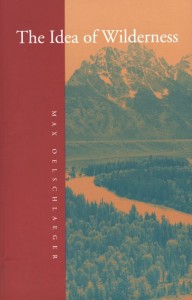 ‘How has the concept of wild nature changed over the millennia? And what have been the environmental consequences? In this broad-ranging book Max Oelschlaeger argues that the idea of wilderness has reflected the evolving character of human existence from Paleolithic times to the present day. An intellectual history, it draws together evidence from philosophy, anthropology, theology, literature, ecology, cultural geography, and archaeology to provide a new scientifically and philosophically informed understanding of humankind’s relationship to nature. ‘How has the concept of wild nature changed over the millennia? And what have been the environmental consequences? In this broad-ranging book Max Oelschlaeger argues that the idea of wilderness has reflected the evolving character of human existence from Paleolithic times to the present day. An intellectual history, it draws together evidence from philosophy, anthropology, theology, literature, ecology, cultural geography, and archaeology to provide a new scientifically and philosophically informed understanding of humankind’s relationship to nature.
Oelschlaeger begins by examining the culture of prehistoric hunter-gatherers, whose totems symbolized the idea of organic unity between humankind and wild nature, and idea that the author believes is essential to any attempt to define human potential. He next traces how the transformation of these hunter-gatherers into farmers led to a new awareness of distinctions between humankind and nature, and how Hellenism and Judeo-Christianity later introduced the unprecedented concept that nature was valueless until humanized. Oelschlaeger discusses the concept of wilderness in relation to the rise of classical science and modernism, and shows that opposition to “modernism” arose almost immediately from scientific, literary, and philosophical communities. He provides new and, in some cases, revisionist studies of the seminal American figures Thoreau, Muir, and Leopold, and he gives fresh readings of America’s two prodigious wilderness poets Robinson Jeffers and Gary Snyder. He concludes with a searching look at the relationship of evolutionary thought to our postmodern effort to reconceptualize ourselves as civilized beings who remain, in some ways, natural animals.’
.
[2] Save Our Suburbs, ^ http://www.sos.org.au/
.
[3] Save The Tree, ^ http://savethetree.org
.
Tags: act locally, an inconvenient truth, Blue Mountains, Blue Mountains City Council, bushphobia, civilisation, conurbation, David Brower, deluded inconvenience, Emilie Travel Livezey, environmental destruction, Eucalyptus burgessiana, Eucalyptus sclerophylla, Faulconbridge, Faulconbridge Mallee Ash, FOE, Friends of the Earth, globalisation, Greater Blue Mountains World Heritage Area, Grose River Sub-catchment, housing encroachment, industrial progress, industrialisation, local character, local residents, Mother Nature, Mount Wellington, NIMBYism, Not In My Backyard, Queenstown, Rare or Threatened Plants (ROTAP), revegetated, rights of locals, Save Our Suburbs, savethetree.org, Significant Tree, Sir Patrick Geddes, Tasmania, terra incognita, The Land & Environment Court of New South Wales, think globally, urban consolidation, wilderness
Posted in Blue Mountains (AU), Tasmania (AU), Threats from Development, Threats from Greenwashing, Threats from Weak Environmental Laws | No Comments »
Add this post to Del.icio.us - Digg
|
|
 The Japanese kill bottlenose whales
(Photo: Save the Whales)
The Japanese kill bottlenose whales
(Photo: Save the Whales)
 Aokigahara forest, below Mount Fuji
Aokigahara forest, below Mount Fuji




































